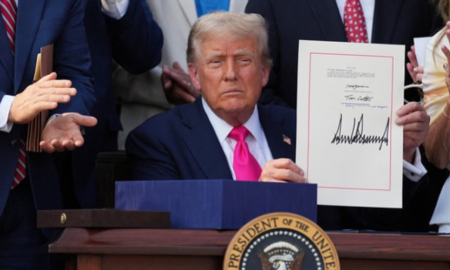
As Markets Decline, Climate Tech Advocates Push for Alternative Funding

Funding in climate technology didn’t vanish—it simply stopped pretending to be easy. After years of aggressive capital inflows, the sector is weathering a correction. But if you’re paying close attention, you’ll notice something: this slowdown is revealing who’s in it for the mission, and who just came for the IPO.
Why Climate Startups Struggle to Scale
If you’ve ever tried to commercialize a battery chemistry or install a solar microgrid in a regulatory maze, you already know this isn’t SaaS. Climate ventures burn through capital before revenue’s even a rumor. Hardware takes time. Permitting drags. Safety testing is mandatory. And that’s before you even hit manufacturing.
Compare that to the average tech startup that can launch with a deck, a hoodie, and a few hundred lines of code. The timelines alone create a barrier. But in climate, patience is a prerequisite—and that’s where investors start to get itchy.

Freepik | DC Studio | Climate innovation takes time, skill, and steady investment to bring ideas to life.
What the Numbers Actually Say
Global funding for climate tech fell 19% in the first half of 2025. That’s not market collapse—that’s a recalibration. In fact, U.S. investments held steady, buoyed by a pivot toward AI-integrated solutions and infrastructure plays. What really took the hit was seed-stage capital. The willingness to back “what-if” ideas is softening, especially as macroeconomic jitters and regulatory rollbacks enter the conversation.
Still, the story isn’t all retreat. Several late-stage firms are closing strong rounds, often thanks to risk-sharing tools and blended capital models that didn’t even exist five years ago.
What’s Working (Hint: It’s Not Just Venture Capital)
Let’s talk about the funding mechanisms that are adapting to this moment, because a few are quietly rewriting the rules.
Decarbon8-US is doing something refreshingly unsexy: recycling philanthropic capital into early-stage climate tech. Think of it as a donor-powered engine. People give, startups get funding, and any returns flow right back into the fund for the next wave. No middlemen with gold-plated pitch decks—just continuous reinvestment built on shared purpose.
Then there’s Elemental’s D-SAFE model, which reimagines how early capital absorbs risk. Instead of placing all bets on one moonshot, nonprofits can fund multiple projects within a company. If something hits, the capital comes back with interest. If not, the investment converts to equity. It’s a structure designed for volatility—not against it.
Don’t overlook state-level green banks, like the one in Washington. These institutions don’t chase unicorns; they focus on closing financing gaps for shovel-ready projects. They move money where private capital hesitates, filling in the infrastructure pieces that make broader innovation possible.
Seattle, and Other Places That Still Believe
One of the perks of living in the Pacific Northwest is that the line between idealism and execution is thinner than you’d expect. Seattle isn’t just full of bright ideas—it’s full of people who’ve spent years grinding through energy policy, impact finance, and decarbonization roadmaps.
This isn’t a market chasing trends. It’s a region quietly building scaffolding. Accelerators that understand climate timelines. Philanthropists who aren’t allergic to hardware. Founders who know that success might mean five years of prototypes before anything touches a customer.

Freepik | New financial tools like D-SAFE help entrepreneurs reduce initial risk and gain investment.
Everyone with a stake in this ecosystem—investors, founders, donors, policymakers—needs to recalibrate. Market slumps create space to rethink incentives, not retreat from the table.
Investors should revisit overlooked areas like grid flexibility and low-cost electrification.
Philanthropists should treat climate capital like they do arts funding: patient, values-driven, and immune to market cycles.
Policymakers should fast-track permitting reform and reinforce green bank mandates.
Founders must get fluent in blended capital, because grants, donations, and recoverable investments may be your Series A now.
This Isn’t a Pause (It’s a Pressure Test)
What we’re seeing isn’t a decline. It’s filtration. The flashy pitch decks are fading. What’s left are people still standing in the room, sleeves rolled, still building. That’s who will shape the next decade of climate tech—not the ones waiting for market conditions to become favorable, but those building the conditions themselves.
More in Tech
-
`
Cowboy Superstitions and Traditions That Might Surprise You
Picture this: the chute clangs open, dust plumes, and all eyes track a cowboy mid-stride. But what the crowd doesn’t see...
July 22, 2025 -
`
What’s Changing for Student Loans After Trump’s New Spending Bill?
The passing of President Donald Trump’s latest spending bill is shaking up more than just tax brackets and business deductions—it’s poised...
July 16, 2025 -
`
Why Big Tech Is Divided on the Future of Artificial General Intelligence
Fifteen years ago, the founders of DeepMind—Sir Demis Hassabis, Mustafa Suleyman, and Shane Legg—set a bold goal: “Build the world’s first...
July 1, 2025 -
`
Planning a Wedding? These Money-Saving Tips Actually Work
Weddings are meant to be memorable, not financially draining. But for many couples, the cost of tying the knot often brings...
June 24, 2025 -
`
Did MrBeast Really Borrow Money From His Mother for His Wedding?
YouTube star Jimmy Donaldson, widely known as MrBeast, sparked surprise when he shared a personal update on X. Despite leading the...
June 17, 2025 -
`
How Smart Technology Is Changing the Way We Travel
Technology has reshaped nearly every part of modern life, and travel is no exception. From how we plan trips to how...
June 12, 2025 -
`
Why Some Tech CEOs Are Replacing Themselves With AI Avatars
In a move that signals a shift in how corporate communication is handled, major tech CEOs are beginning to hand the...
June 3, 2025 -
`
Is Innovation Dead in American Pop Culture?
Has something changed in the way we engage with American pop culture? Scroll through your favorite streaming service, tune into the...
May 27, 2025 -
`
7 Key Steps to Start a Profitable Digital Products Business
Starting a digital products business offers an exciting opportunity to turn your skills and knowledge into a revenue-generating venture. Whether you’re...
May 20, 2025














You must be logged in to post a comment Login